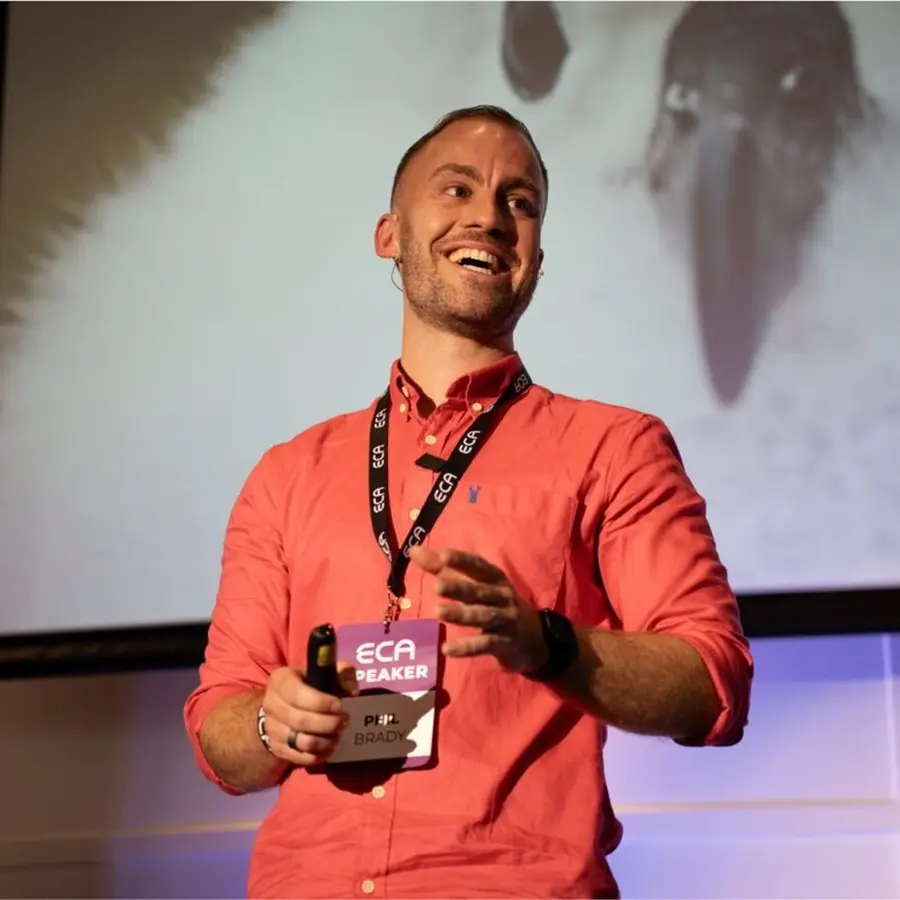Partnering with leaders and high-potential future leaders in coaching conversations, Philip focuses on helping to unpack challenges, rewrite stories and build confidence to grow and evolve personally and professionally. Where needed, we leverage psychometrics to facilitate self-awareness (Hogan, VIA etc.) and build accountability in making progress.
Website: https://philipbradycoaching.com/
Imposter syndrome. That familiar, creeping feeling that you’re not quite what people think you are — that you’ll be “found out.” It shows up in performance reviews, onboarding conversations, coaching sessions, and maybe even quietly in the back of your own mind.
But what if imposter syndrome isn’t something to fix or overcome?
What if it’s something to welcome?
This might sound counterintuitive, especially for HR professionals who are often tasked with supporting leaders through transitions, building confidence in others, and helping teams perform at their best. But stick with me.
I want to suggest that imposter syndrome is not a signal of inadequacy. It’s a signal of growth.
The Space Between Who You Are and Who You Think You Should Be
When people describe feeling like imposters, it’s often in the context of stepping into something new: a bigger role, a leadership position, a stretch opportunity. What tends to follow are the stories and projections — sometimes unconscious — that define who we think we need to be to succeed in that new space.
We might believe, for example, that to be a leader we have to be perfectly stoic, always confident, never emotional. Or that we need to know all the answers. These expectations quietly shape the internal bar we think we need to reach. But here’s the thing: they’re often not true, and almost always unrealistic.
When the reality of who we are — messy, flawed, stressed, human — doesn’t match up with that idealized version of “who we should be,” dissonance sets in. That dissonance is what many people label as imposter syndrome.
In essence, we’re trying to squeeze ourselves into a persona we think is required, and it doesn’t fit. So we feel like we’re faking it.
You Are Not a Fixed Self
Here’s a gentle reframe: what if the problem isn’t the mismatch, but the idea that who you are is fixed at all?
If you think of yourself as a static identity — this is who I am, full stop — then any new demand that stretches you feels like a threat to that identity. But if you think of yourself as a process, a living and evolving being capable of growth, the picture changes entirely.
You can think of your personality less like a set wardrobe of clothes you have to wear, and more like a collection of behaviors you practice depending on the context. You’re not always the same “you” with your children, your team, your partner, or your manager—and that’s not a problem. That’s adaptability.
This doesn’t mean pretending or performing. It means expanding your range.
Sometimes, we get it wrong. Like when I try to “coach” my loved ones—it’s not what they need from me at that moment. Or when a parent tries to manage their children with corporate strategy (spoiler: it rarely ends well). But in other situations, those same behaviors are exactly what’s needed. Context matters.
You Don’t Have to Be Confident. You Can Practice Confidence.
Take something like kindness. You’re not a kind person or not a kind person. You simply practice kindness—more or less often, depending on the situation. It’s a behavior you can choose. Same goes for confidence, assertiveness, vulnerability, presence. These aren't fixed traits. They’re muscles.
And like any muscle, they develop with practice, over time.
As HR professionals, this is a powerful insight not just for yourself, but for those you support. You don’t have to become someone else to thrive in a new role or step up in a big moment. Instead, your sense of self can expand to include the new skills, the new presence and the new behaviors required.
It’s not an either/or. It’s an and.
Self-Awareness is the Key to Integration
So what’s the risk? If we keep shape-shifting to fit every new role without awareness, we risk losing touch with ourselves. That’s real. But the antidote isn’t to freeze our identities in place. It’s to deepen our self-awareness.
With awareness, we can notice when we’re slipping into personas that don’t serve us — or others — and come back to center. We can reflect on what’s working and what’s not. And most importantly, we can choose how we want to show up, rather than reacting out of fear or habit.
When we make space for that kind of reflection — for ourselves and for others — imposter syndrome loses its grip. It stops being something to hide or avoid and becomes a natural part of learning, of growing, of expanding into what’s next.
Final Thought: You Don’t Need to Be Someone Else
You don’t need to “fix” imposter syndrome. You don’t need to wait until you feel completely confident to take that next step. You just need to be willing to expand your identity to include the version of you that can lead, that can stretch, that can show up in new ways.
That version of you already exists. You’re just getting to know them.
And that, to me, is not a horror movie—it’s an adventure story.
Continue reading
We help hundreds of people like you understand how the latest changes in employment law impact your business.
Please log in to view the full article.
What you'll get:
- Help understand the ramifications of each important case from NI, GB and Europe
- Ensure your organisation's policies and procedures are fully compliant with NI law
- 24/7 access to all the content in the Legal Island Vault for research case law and HR issues
- Receive free preliminary advice on workplace issues from the employment team
Already a subscriber? Log in now or start a free trial


